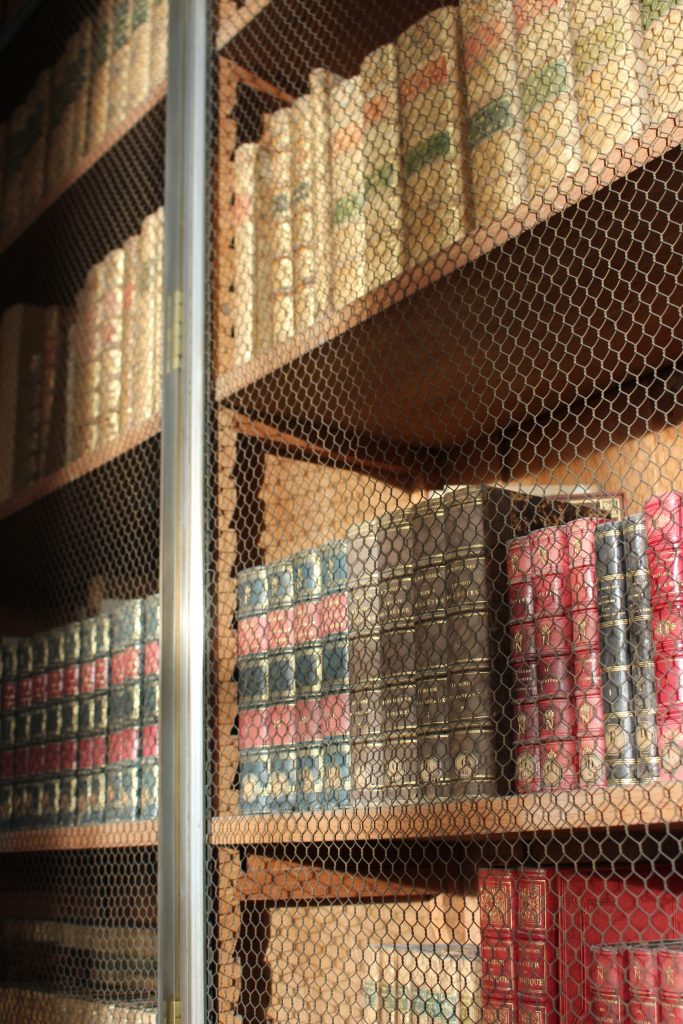Originally installed in the Saint-Saturnin Chapel in 1807, the palace library spent more than four decades in this unique space before being moved for the first time in 1851 to the site of the prestigious royal library from the Renaissance, above the Francis I Gallery. Neither of these two initial sites can be seen today.
However, the final site, designed in 1858 by the librarian Jacques-Joseph Champollion-Figeac at the request of Napoleon III, can still be seen in the Diana Gallery.
Some 20,000 volumes were placed in the library's sixteen bookcases, designed by the architect Alexis Paccard and placed between the doors and windows of the gallery, and in the two long low cabinets in the centre. Four cabinets in the "Salon du Roi de Rome" at the end of the Gallery completed this collection.
Initially formed from stock from the Library at the Conseil d’État, which Napoleon I had ordered to be transferred in 1806, the collections at the palace library were constantly added to throughout the 19thcentury. Every discipline (theology, jurisprudence, history, travel, literature, science and the arts) was represented right from the start.
Acquisitions, designed to meet the requirements of the most erudite scholars and cater to the needs of a wide range of users, were extremely varied: antiquarian books, specialist works, fashionable novels, picture books and newspapers etc.

Lending procedures were put in place by the First Empire and fine-tuned until 1870, paving the way for how our existing public libraries are managed. The loan records tell us a lot about changing tastes in reading. They show, for example, the growing popularity of realist novels from the 1830s onwards.
Until the end of the Second Empire the palace libraries were frequented by the thousands of residents in the palace and the invited guests from diverse backgrounds. They gradually disappeared after 1870, along with the Court and the staff who worked there. The library at Fontainebleau is the only example that has survived, in its well documented original condition.
Its value as a historical record and the diverse nature of its collections is what makes the library at Fontainebleau so exceptional.